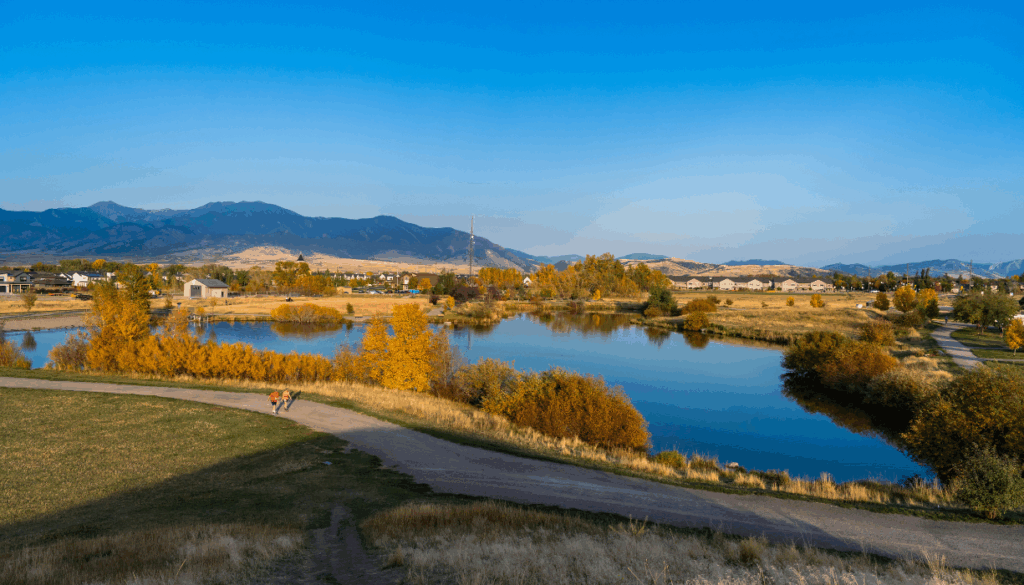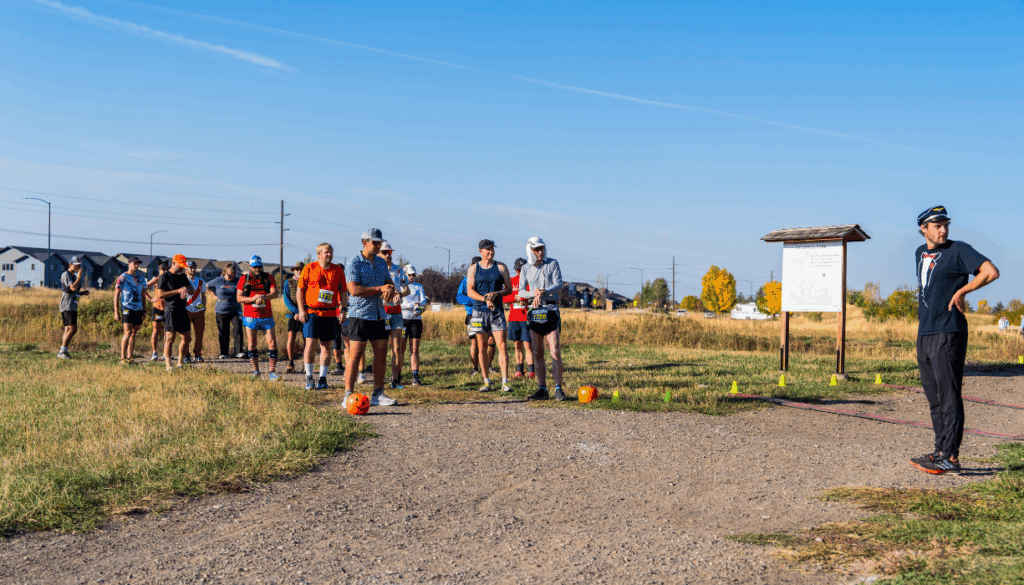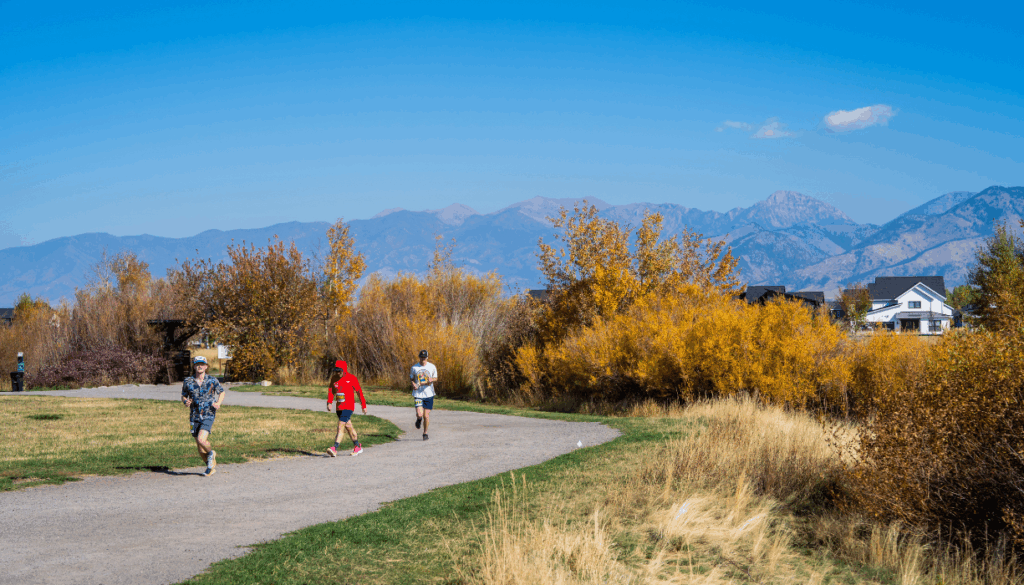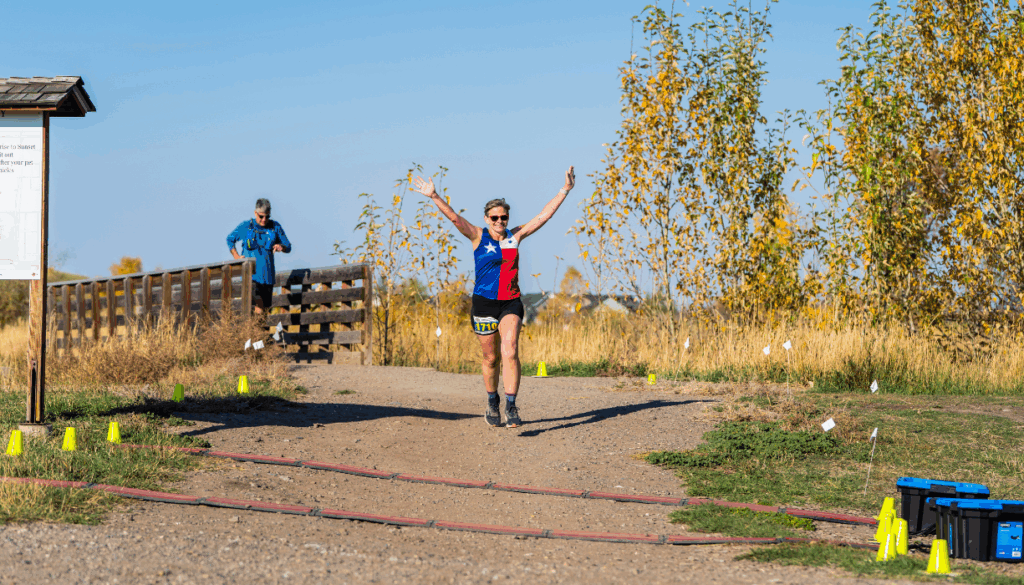From film sets to finish lines—how a filmmaker and seasoned ultrarunner joined forces to launch a 24-hour race in Bozeman, powered by grit, Gatorade, and friends.
When Jeff Garmire pitched me the idea of starting a race together, I was stoked. Our skills aligned perfectly. With his background racing everything under the sun and my ability to email 700 people in a day (I have — and now I’m locked out of my Yahoo account permanently), we could make something special happen.
First, we had to decide what the race would be. Jeff created many stunning routes around Bozeman that I would love to tackle one day, but that’s where we hit our first snag. We talked to the Forest Service and learned that grizzly bear restrictions make almost anything in the nearby areas not financially viable. To keep bears and humans safe, there are limits on the number of people in the area (including crew and volunteers) and restrictions on how many hours participants could run. Even breaking even would be unlikely.
With a mountain race no longer on the table, we pivoted to a new idea — a fixed-time event we could hold in town. Permits for that would be easier. Right? The first local park we looked into was closed at night, and city officials said we would not be allowed to bypass those rules. They suggested a local county park that had different rules.

Jeff scouted a 1.5-mile loop while I began emailing and calling the county park officials constantly. It took a long time, but my persistence paid off. On July 9th, we finally got our permits for a 24-hour race, including tents in the park. The inaugural Montana Meltdown was going to be on October 12. Yikes!
With the approval for the race coming just 3 months before the event, everything was a bit chaotic. We created our event on UltraSignup, which thankfully replies promptly to emails asking for help on page setup. While Jeff handled the business side of things (LLC, bank account, insurance), I got back in email mode, reaching out to running groups, stores, and nonprofits in the surrounding states to spread the word.
We created an Instagram account for marketing, posting several times a week. I had a blast creating memes of any photo we had taken as a couple to announce the new race. We ran the course in costume (Jeff’s idea, of course) for even more content. A friend made a logo for us, and we created a poster to hang around town. Bozeman loves its posters!
We wrote a runner guide, using ones from races we had run previously as inspiration. We priced out finisher prizes and settled on kazoos with personalized race ribbons. We hired a friend from town as a race photographer, and another friend asked for a free entry in exchange for making our podium awards. Living in a small town is a treat!
Back to that bathroom thing, I also priced out port-a-potty rentals all over the county. They are more expensive than you would think! A big lesson I learned is to wait until you have a better estimate of the number of racers, and then go back to the permitting authority and ask how many units they will require. Thankfully, our contact was responsive and amenable to us adjusting the number of rentals.
A few weeks before the event, we toured the course with the county official and made final arrangements for using the two pavilions with electricity. This saved us from having to rent a generator for the aid station.
At our aid station, we used a hot water kettle for hot drinks, ramen noodles, and oatmeal. Jeff’s InstantPot was perfect for a larger offering of soup, and a grilled cheese maker allowed us to cook sandwiches hot to order. Using electric kitchen gadgets saved us from buying lots of propane or relying on camp stoves to cook all night.
Another lesson learned is to get more light for the aid station. Luckily, a friend (we have the best friends here) lent us a giant portable work light. With more light, it is easier for runners to see their gear and the food offerings, or just get a boost of energy when they come into the aid station.
We also borrowed water jugs to avoid buying and wasting tons of plastic ones. We had lots of ice to cool runners off during the day, but it wasn’t utilized much. We both felt we could improve on reminding runners that the aid station is there for them. Some runners were dialed with their own nutrition plans, but some were newer to races and didn’t realize they could eat all those snacks!
We did all of the shopping the afternoon before the race. Being Trail Sisters approved, we needed to provide feminine products at the aid station. (FYI, an incredibly easy process to be approved!! All guidelines on Trailsisters.net) We purchased those supplies, as well as minor first aid items, and tons of snacks. Lesson here: space out the shopping or go the weekend before. 4+ hours of shopping the night before we needed to be awake for 24 hours was not ideal. While we had a blast deciding what items we should serve, a calmer evening of sleep is preferred (if possible).
Jeff set the race start at 10AM for the 12 and 24-hour event, with 4-hour runners starting at 12PM. This gave us a few extra hours in the morning to get things set up and ready to go, without having to wake up at 3AM.

We arrived in the park at 8AM to meet our timing official. He had everything ready to go. Race timing was an area I knew nothing about, but luckily, I learned that if you hire the right person, you don’t have to do much! We found our timing company at a local run club meetup, but we also had a company reach out on Facebook when they saw our posts. Sometimes, if you let people know what you’re working on, the resources you need will present themselves.
We chose to be a USATF-certified event, which did require having each runner sign a waiver prior to participating. However, we had an amazing volunteer handle this for us, and the sign-in process was a breeze!
Jeff marked the course with flags, spoke to the runners, and explained the route and how to come back through the timing mats, and then—they were off!
I hadn’t been prepared to be so invested in how each runner was doing. There were people who didn’t know us, who had learned of the event online and were excited enough to fly in from far away and run the same loop dozens of times over. They felt like family. I couldn’t wait to help them out with a cold drink, a hot cup of soup, or whatever they needed.

Cheering them on was emotional, especially in the dark, cold hours of the night. Several runners would sit with Jeff and me in the pavilion, snacking or resting between loops. We shared stories and got to know one another. One of the highlights for me, for sure.
Sunrise brought new vigor. Seeing the runners who had been slowing down get a new boost of energy for the final few hours was incredible.
We cheered on the final lap, took lots of photos, and said goodbye to the runners. A race is nothing without participants, and I wanted each of them to know how much it meant to us that they signed up.
Once they were gone, we cleaned up with the help of more friends. Whether running the event themselves, bringing us dinner Saturday night, or showing up at 6AM on Sunday to help us make coffee, our friends truly helped us succeed. Having a strong support network is key when launching a new event. We are so grateful for year one and can’t wait for year two!
